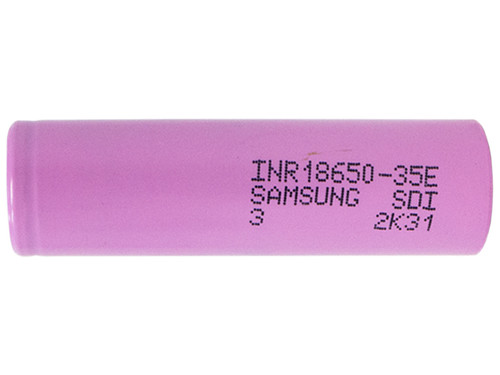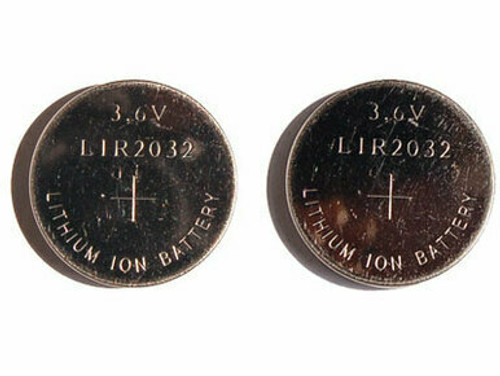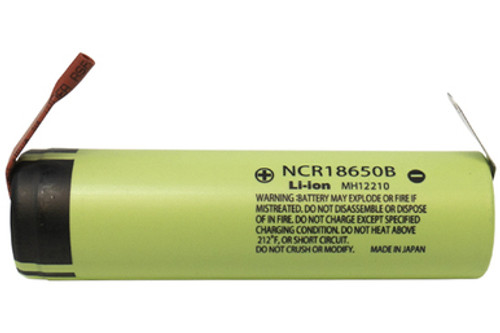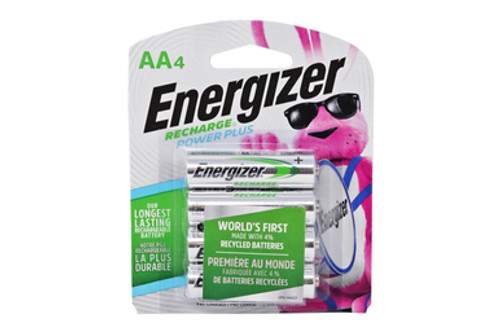Rechargeable
-

-

-

-

-

-

-

-

-

-

-

-

-

-

-

-

-

-

-

-

Powerex
AA NiMH Powerex PRO Rechargeable Batteries (2700 mAh) with Battery Case (4 Card)
$26.49As low as: -

RECHARGEABLE BATTERIES
Rechargeable Batteries: Powering the Present, Preserving the Future
In today’s fast-paced world, where sustainability and efficiency are paramount, rechargeable batteries have become the cornerstone of modern energy solutions. Whether you're using them in a simple TV remote, a high-powered camera, or a robust power tool, these batteries provide an eco-friendly, cost-effective alternative to their disposable counterparts. With the growing demand for sustainable energy options, rechargeable batteries are leading the charge toward a cleaner, greener future.
What Are Rechargeable Batteries?
Rechargeable batteries, also known as secondary batteries, are designed for repeated use. Unlike disposable batteries, which are discarded after their energy is depleted, rechargeable batteries can be recharged hundreds—or even thousands—of times. This reusability not only reduces environmental waste but also offers significant long-term cost savings.
Rechargeable batteries come in a variety of chemistries, each tailored to specific needs. The most common types include nickel-metal hydride (NiMH), nickel-cadmium (NiCd), and lithium-ion (Li-ion). While they differ in terms of capacity, lifespan, and applications, they all share the same fundamental advantage: they can be recharged and reused, making them a more sustainable and economical option compared to single-use batteries.
Exploring Sizes and Capacities of Rechargeable Batteries
Rechargeable batteries are available in a wide range of sizes and capacities to suit various devices and applications. The most commonly used sizes—AAA and AA—are staples in households and industries alike, but their capacities vary depending on the chemistry and intended use.
1. AAA NiMH Rechargeable Battery (700 mAh)
AAA NiMH (nickel-metal hydride) batteries are ideal for low-drain devices such as remote controls, wireless keyboards, and LED flashlights. With a capacity of 700 mAh, these batteries strike a balance between compact size and sufficient power, making them a reliable choice for everyday devices.
2. AA NiMH Rechargeable Battery (400 mAh)
AA NiMH batteries are better suited for medium-drain devices like digital cameras, handheld gaming consoles, and portable audio players. Their higher capacity ensures extended usage, making them indispensable for gadgets that demand more energy.
3. AAA NiCd Rechargeable Battery (350 mAh)
Nickel-cadmium (NiCd) batteries are known for their rapid charging capabilities, making them perfect for high-drain applications. Devices like power tools, RC toys, and certain medical equipment rely on NiCd batteries for their ability to deliver bursts of high energy while recharging quickly between uses.
Each of these battery types serves a specific purpose, but they all offer significant advantages over disposable alternatives, particularly in terms of longevity and performance.
Choosing Quality: Why Brands Matter
Not all rechargeable batteries are created equal. Choosing reputable brands is essential to ensure optimal performance, safety, and durability. Renowned manufacturers like Tenergy, Sanyo, and Panasonic have established themselves as leaders in the battery industry, consistently delivering high-quality products.
What Sets Reputable Brands Apart?
Safety Standards: High-quality rechargeable batteries undergo rigorous testing to meet safety standards, reducing the risk of leaks, overheating, or malfunction.
Performance Reliability: Trusted brands offer batteries with consistent energy output, ensuring your devices perform at their best.
Longevity: Premium batteries are built to withstand hundreds or thousands of recharge cycles without significant capacity loss.
Investing in a reputable brand might come with a slightly higher upfront cost, but the long-term benefits—greater reliability, safety, and performance—are well worth it.
The Benefits of Rechargeable Batteries
Rechargeable batteries offer numerous advantages over their disposable counterparts. These benefits go beyond just financial savings and contribute significantly to a more sustainable and efficient lifestyle.
1. Cost Savings
Although rechargeable batteries typically cost more upfront, their reusability translates into substantial savings over time. A single rechargeable battery can replace hundreds of disposable batteries, making it a cost-effective solution in the long run.
2. Environmental Impact
Disposable batteries contribute significantly to landfill waste and contain harmful chemicals like mercury and lead, which can leach into the soil and water. Rechargeable batteries reduce this environmental burden by minimizing the demand for single-use products. By choosing rechargeable options, you’re actively participating in reducing waste and conserving natural resources.
3. Convenience and Versatility
Rechargeable batteries eliminate the need for frequent replacements, saving both time and effort. Modern chargers make it easy to recharge multiple batteries simultaneously, ensuring that you always have a fresh set ready to go. Their versatility also means they can be used in a wide variety of devices, from household gadgets to industrial equipment.
4. Improved Performance
Many rechargeable batteries have higher capacities and lower self-discharge rates than their disposable counterparts. This means they can store more energy and retain it for longer periods, providing consistent and reliable power. For high-drain devices like cameras or power tools, rechargeable batteries offer superior performance, delivering the energy required to operate efficiently.
Common Myths About Rechargeable Batteries
Despite their advantages, several myths persist about rechargeable batteries. Let’s debunk some of the most common misconceptions:
1. "Rechargeable batteries don’t last long."
This is a myth that stems from outdated technology. Modern rechargeable batteries, particularly NiMH and lithium-ion, are designed to last for hundreds or thousands of recharge cycles. Proper care, such as avoiding overcharging and extreme temperatures, can further extend their lifespan.
2. "They’re too expensive."
While the initial cost of rechargeable batteries is higher, their long-term savings far outweigh this initial investment. The ability to reuse them repeatedly makes them much more economical over time.
3. "Rechargeable batteries don’t hold a charge for long."
Advancements in battery technology have significantly reduced self-discharge rates. High-quality rechargeable batteries can retain their charge for weeks or even months, depending on the chemistry and storage conditions.
The Role of Rechargeable Batteries in a Sustainable Future
The growing emphasis on sustainability has placed rechargeable batteries at the forefront of eco-friendly energy solutions. As the demand for portable power increases with the proliferation of electronic devices, the need for sustainable alternatives has never been greater.
Supporting Renewable Energy
Rechargeable batteries are a crucial component of renewable energy systems, such as solar panels and wind turbines. They store excess energy generated during peak production times, ensuring a consistent power supply even when energy production fluctuates.
Reducing E-Waste
The global shift toward rechargeable batteries is helping to reduce electronic waste, a major environmental challenge. By replacing disposable batteries with rechargeable ones, we can significantly decrease the volume of waste sent to landfills each year.
Making the Switch: How to Get Started
Transitioning to rechargeable batteries is easier than you might think. Here’s how you can get started:
Identify Your Needs: Determine which devices in your home or workplace use batteries and assess their power requirements.
Choose the Right Type: Select the appropriate rechargeable battery based on your device’s energy demands and usage patterns.
Invest in a Good Charger: A reliable charger is essential for maintaining the longevity and performance of your rechargeable batteries.
Proper Maintenance: Store your batteries in a cool, dry place and avoid overcharging to maximize their lifespan.
Rechargeable batteries are more than just a practical solution for powering our devices—they’re a step toward a more sustainable future. With their ability to reduce waste, conserve resources, and deliver reliable performance, they offer unmatched value and convenience. Whether you’re powering a simple remote control or a high-performance power tool, rechargeable batteries are a smart, eco-conscious choice.
By investing in rechargeable batteries today, you’re not just saving money—you’re also contributing to a cleaner, greener planet for generations to come. Make the switch and join the movement toward sustainability, one battery at a time.

